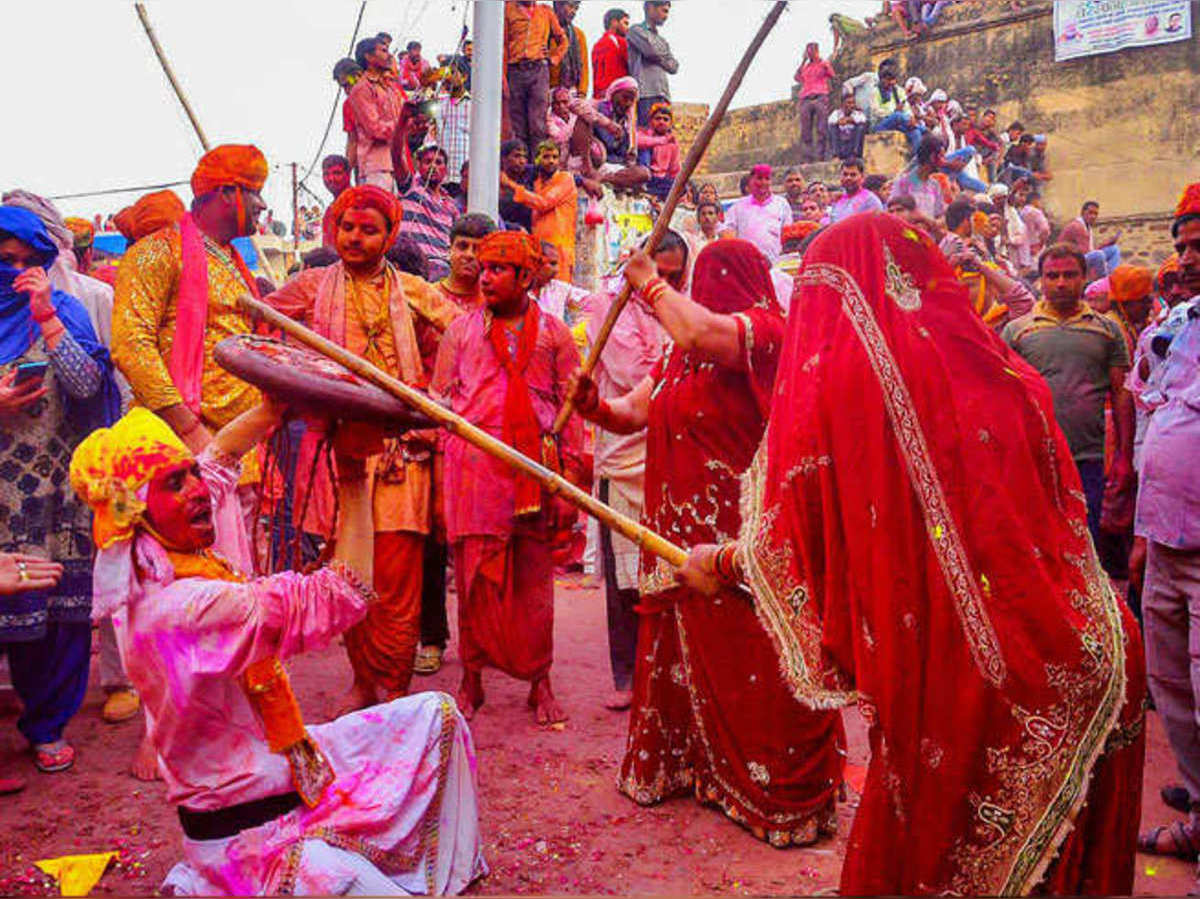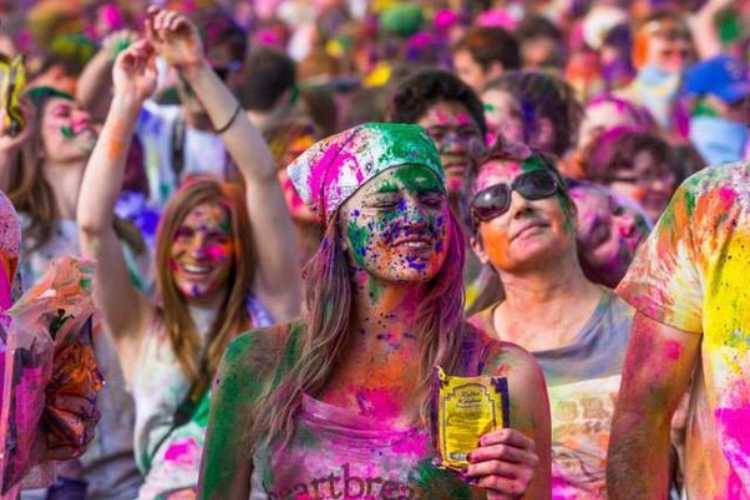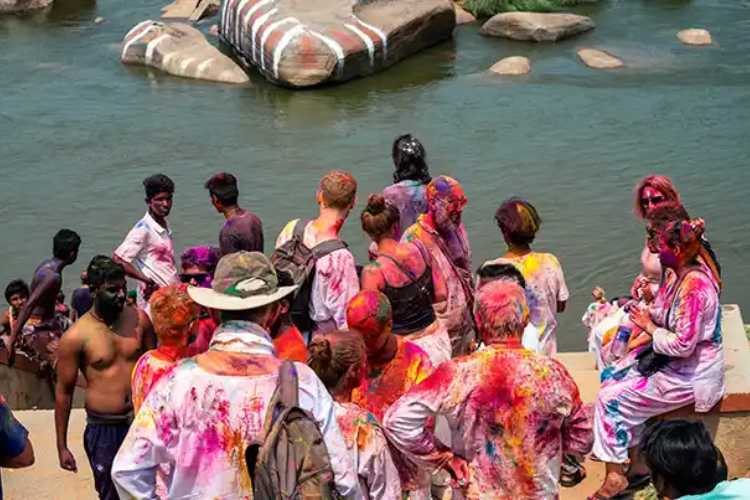.jpg)
Nakul Shivani/ New Delhi
Holi is one of the major Hindu festivals celebrated each year in the country with an exhibition of excess colours and water. In 2023 it falls mid-week on the 8th of March. Also known as ‘Festival of Spring’ Holi is celebrated by people across the length and breadth of the country irrespective of the caste and religion they belong to.
According to the Hindu calendar, Holi is celebrated on the last full Moon day of Poornima in the month of Falgun. It is celebrated over two days and commences with a bonfire and culminates with a grand celebration the next day.
The word Holi is derived from Hollika the sister of King Hiranyakashipu who was burnt on a pyre when she conspired to kill Hiranyakashipu’s son Prahlad against whom the king was angry since he did not obey his orders to worship him instead of Lord Vishnu.
The story goes that Lord Brahma had blessed King Hiranyakashipu with eternal life. He was granted a boon that he would not be killed by any man or animal, neither during day or during night, nor on land or water. This made the King think he is god.
When he discovered that his son Prahlad is a devotee if Lord Vishnu, he told Prahlad to worship him and not Lord Vishnu. When he disobeyed his father’s orders, King Hiranyakashipu thatched a conspiracy along with his sister Hollika to get rid of him.
On a given day, Holika was to sit on a pyre with a blanket wrapped around her with Prahlad in her lap. The plan was hatched in the hope that the blanket would save Hollika from the fire and burn Prahlad. But that was not to be as strong winds that day blew the blanket over Prahlad saving him and burning Hollika on the pyre.
Since then, the tradition of Hollika Dahan began. It is also a celebration of victory of good over evil.
The celebration of this festival across the country is rich in history and festivities. Here is a look at some of the iconic towns which have over the centuries come to be associated with the celebration of this festival.

'Lathmaar Holi in Nandgaon
Mathura, Vrindavan and Barsana, Uttar Pradesh
The three cities are part of the Brij Bhoomi which forms the plains on either side of the Yamuna river for around 300 kilometers. It is here that the folklores of Lord Krishna are alive. Holi is celebrated in Brij bhoomi for more than a week. Celebrations are of epic proportions and therefore people from across the world visit this place to take part in the festivities.
In Nandgaon, there is a tradition of women beating the menfolk with sticks to celebrate ‘Lathmaar Holi’. Closeby in Barsana, there is the ‘Laddoo Holi’ in which bright yellow coloured Bundi Laddoos are thrown at each other. Vrindavan is famous for playing Holi with dry petal leaves inside the Banke Bihari Temple. At the Dauji Temple in Dauji, there is a complete riot of colours.
.jpg)
Women attire in bright hues of yellow, red and orange during Holi in Shantiniketan
Shantiniketan, West Bengal
Visit Shantiniketan in West Bengal for a flavour of Holi that is unique in the truest sense of the term. Inspired by the festival of Spring, nobel laureate Rabindranath Tagore introduced the festivities in Viswa Bharti University as part of an annual ritual. Holi is celebrated here through a fusion of colours and cultural events. Women are all dressed in a shade of yellow, red and orange during the celebrations.
.jpg)
Display of Martial Arts is an integral part of Hola Mohalla celebrations
Anandpur Sahib, Punjab
Known as Hola Mohalla, the three-day sikh festival culminates a day after the festivities with colours are over. This dates back to the early 18th century when Guru Gobind Singh started the celebrations as part of his protests against Mughal intolerance. The festival here is marked by a demonstration of the rich tradition of sikh valour through martial arts by nihangs. There is an extravagant celebration of mock fights, horse riding and wrestling among others.

Foreigners are an integral part of the celebrations in Pushkar
Pushkar, Rajasthan
This city of Rajasthan celebrates Holi in a royal style. It is transformed into a rainbow for close to a week due to the riot of colours during this time. Being a major tourist city, many foreigners join in the festivities.

A bath in the Tungabhadra river after playing holi is a must in Hampi
Hampi, Karnataka
Hampi breaks the notion that Holi is a celebration of north India. Traditional celebrations around the ruins of the Vijayanagar empire mark the festival in this part of the country beyond the vindhyas. Highlight of the festival here is the dip people take in Tungabhadra river to clean the colours after the festivities. It is believed, a wash after playing Holi in the river cleans a person of all sins.
ALSO READ: Why is everyone asking - 'Holi kab hai?'
